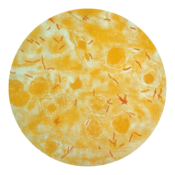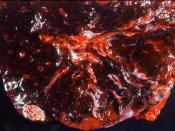TUBERCULOSIS
Introduction
Structure and Size of Pathogen
Transmission
Infections
Symptoms
Treatment
Prevention
Introduction
First discovered by German physician Robert Koch, Tuberculosis (TB) is a chronic bacterial infection which can progress into TB disease when the immune system is overcame by the TB Bacilli. Caused by the Mycobacterium Tuberculosis (also called TB Bacilli), which are covered by unusually waxy coats and can thus withstand weak disinfectants and survive in dry state for up to weeks, treatment for active TB is tedious and involves in various antibiotics. This is also due to the reason that M. Tuberculosis is among the most obstinate bacteria to treat, with the ability to develop into multi-drug-resistant TB.
In the case of latent TB infection in which the immune system overcomes the infection by enclosing the bacterium in a fibrous capsule, the infection remains dormant for many years. As a result of this, people with latent TB will not develop symptoms of the disease.
TB most commonly affects the lungs after infection, but it can also attack other body parts such as the central nervous system, the lymphatic system, bones, joint, and even skin. Treatments for cure are available.
Structure and Size of Pathogen
M. tuberculosis is a rod-shaped bacillus, an aerobic bacterium that divides extremely slowly in comparison with other bacteria (only every 16-20 hours). The bacterium can only grow within the cells of a host, but can also be cultured in a vitro.
MTB is a small bacillus covered in an unusual cell wall, rich in lipids, which allows it to survive in a dry state for up to weeks, even in particles of dust.
M. tuberculosis has co-evolved with human beings for many thousands of years, and has therefore developed into different strains of M.TB that are distinguished by their different coding and...



GREAT ESSSAY
VERY WELL ORGANIZED AND IT COVERS ALL THE IMPORTANT FACTS ABOUT TUBERCULOSIS COULD NOT BEEN BETTER KEEP UP THE GOOD WORK AND THANK YOU FOR SHARING IT WITH ALL OF US
2 out of 2 people found this comment useful.